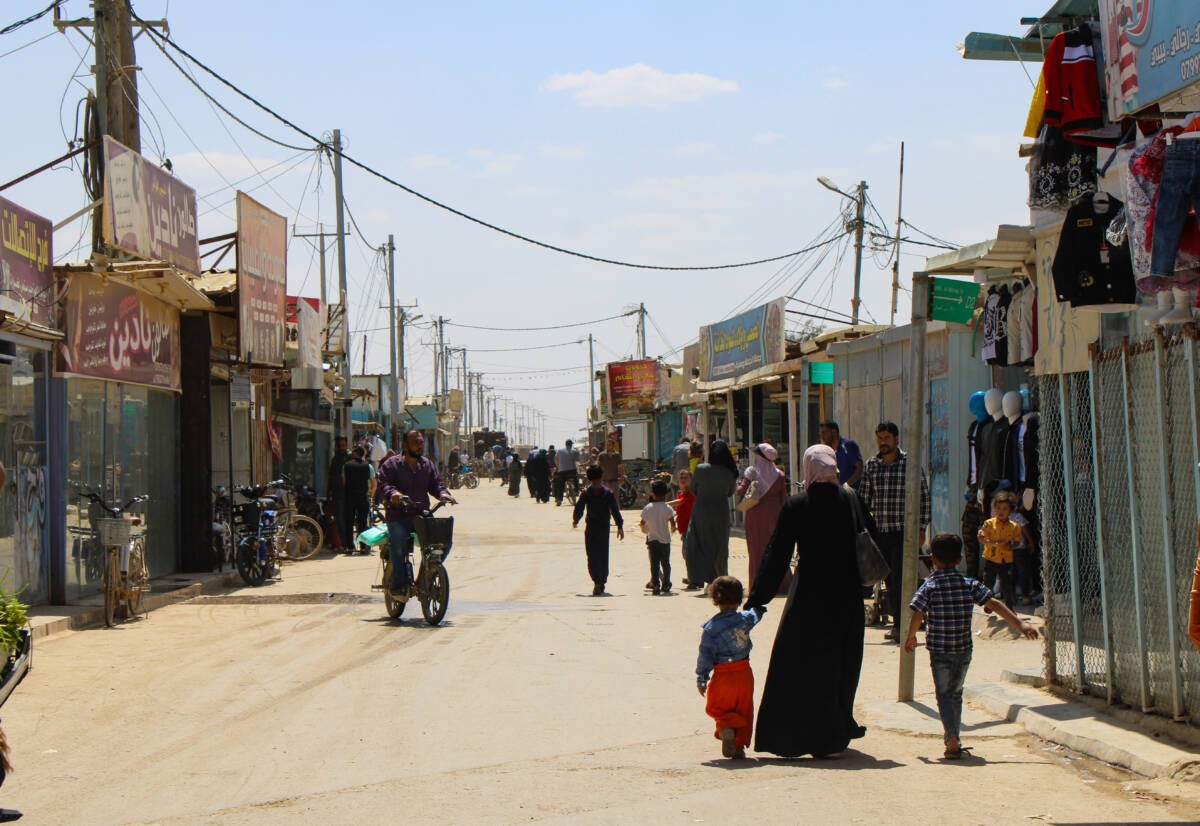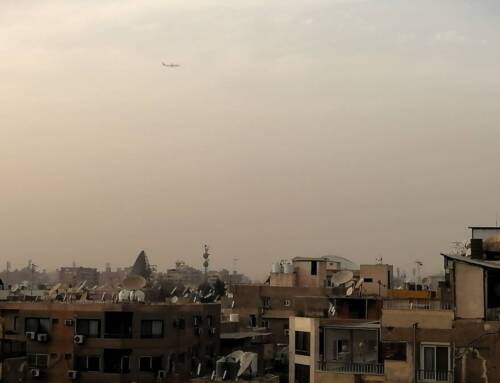Aid cuts leave Ramadan tables sparse in Jordan’s Zaatari camp
Syrians in Zaatari, the world’s largest Syrian refugee camp, are struggling to make ends meet this Ramadan after the World Food Program cut their food assistance by about a third last year due to funding shortfalls.
5 April 2024
ZAATARI — In Zaatari, the world’s largest Syrian refugee camp, supermarkets are packed. Decorations for the Muslim holy month of Ramadan dangle above shoppers preparing for the evening’s fast-breaking iftar meal and the fast-approaching Eid al-Fitr holiday.
A few days into April, Zaatari’s nearly 80,000 residents have just received their monthly food aid allowance from the World Food Program (WFP). However, the sum is significantly less this Ramadan after funding pitfalls forced WFP to reduce its food assistance for Syrians in Jordan in July 2023.
“The aid isn’t enough, you can’t buy anything with it,” Marwan*, a middle-aged man originally from Syria’s southern Daraa province, told Syria Direct while shopping. Residents of Jordan’s two largest Syrian refugee camps, Azraq and Zaatari, now receive just 15 Jordanian dinars ($21) per person each month for food, about a third less than the 23 dinars ($32) they received before the cuts.
“The situation became worse after the [aid] reductions,” Marwan said. “People are poor and there is no work,” he added, turning to join a line of shoppers waiting to check-out using WFP’s iris scan payment technology.
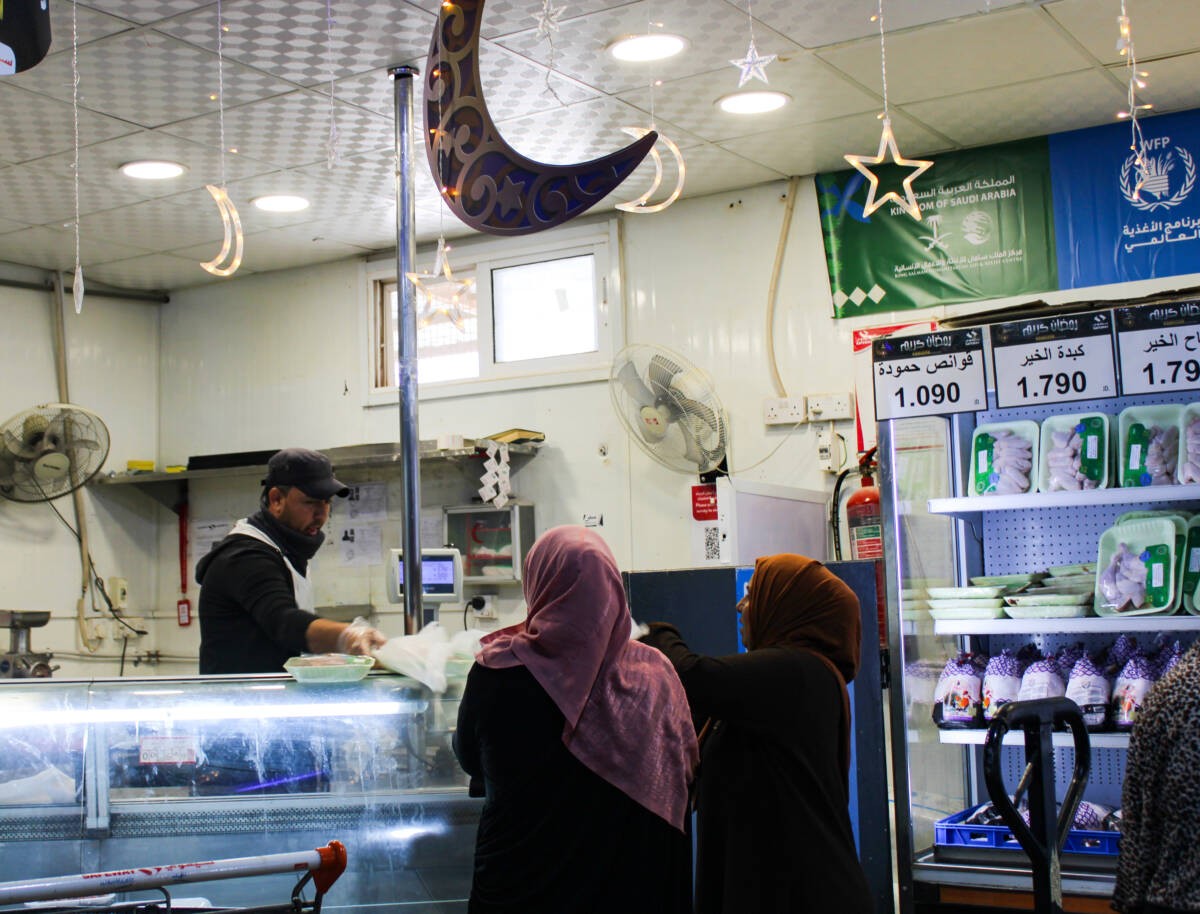
Syrian women buy meat at Safeway supermarket in Jordan’s Zaatari refugee camp, 3/4/2024 (Hanna Davis/ Syria Direct)
‘Lifeline’ dwindles
“Cash assistance is a lifeline for refugees both in camps and in communities,” the UN Refugee Agency (UNHCR) spokesperson in Jordan, Roland Schoenbauer, told Syria Direct. It is particularly important in the camps, where there are limited livelihood opportunities, he added.
Donor fatigue towards the now 13-year-old crisis in Syria, combined with competing humanitarian crises and a lack of sustainable, development-oriented solutions for Syrians in Jordan has left humanitarian organizations struggling to raise the funds needed to cover refugees’ growing needs, Schoenbauer said.
Jordan hosts the second-largest number of refugees per capita in the world. As of 2024, 717,000 refugees, most of them Syrian, are registered with UNHCR in Jordan. The majority live outside the country’s three formal Syrian refugee camps.
For refugees in the camps, WFP assistance is their main source of income, according to UNHCR’s latest report from the fourth quarter of 2023. The report recorded a “significant drop” in the monthly income of refugees in the camps, which it attributed to reductions in assistance.
In Zaatari, the average monthly income dropped from 287 JOD ($405) in the third quarter of 2023 to 195 JOD ($275) in the fourth quarter. Around 80 percent of Zaatari residents now rely on less preferred, less expensive food to cope, while nearly half of residents reduce the number of meals they eat in a day, limiting their portion sizes or consuming less so their children can eat, UNHCR reported.
In addition to the food assistance cuts, this past winter UNHCR stopped its winterization assistance: a yearly sum of $100 for refugees in host communities and $175 for those in the camps to help cover higher costs associated with the winter season, such as fuel, blankets and warm clothes, Schoenbauer said.
The UN agency expects it will also have to slash basic needs cash assistance for vulnerable refugees living outside the camps by 25 percent this coming May due to a lack of funding.
Funds for refugees “are in freefall,” Schoenbauer said, even as their needs grow amid rising costs of living in Jordan. “We call on donors to not forget Jordan, and to stop this dramatic drop in funding.”
‘Sham Elysées’ business stagnates
Just outside the doors of Zaatari’s Safeway supermarket, an older man tied two six-packs of Coca-Cola to his bicycle. He bought them for 9.50 JOD ($13.40) using his food allowance, which can only be spent using iris scan technology at four WFP-contracted bakeries and two supermarkets in the camp.
Raed*, who fled Daraa in 2013 and has been living in Zaatari since, told Syria Direct he planned to sell each two-liter bottle for about 0.90 JOD ($1.27). If all sold, he would make around 10.80 JOD ($15.25) in cash, and could spend it where he liked on the wide array of food and other goods available in the camp’s informal markets.
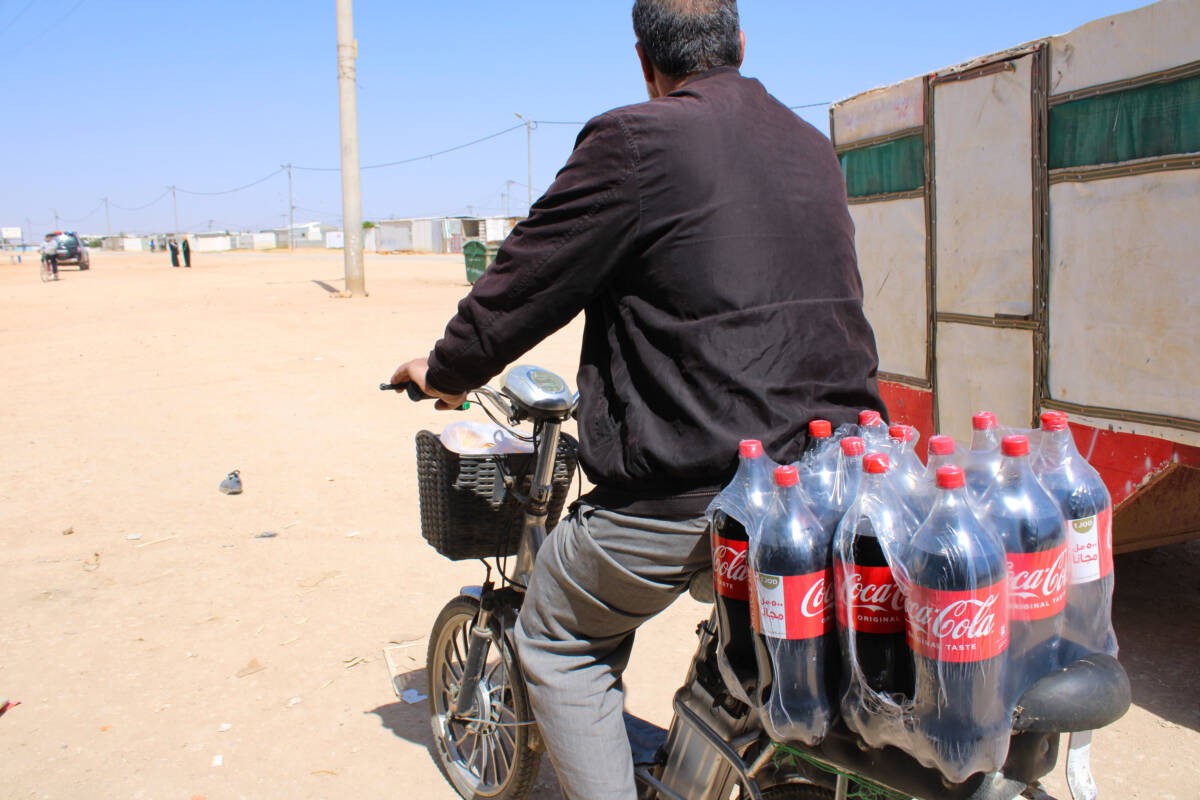
A Syrian man rides his bike loaded with two backs of Coca-Cola he purchased with WFP food assistance in Zaatari camp and intends to sell for cash, 3/4/2024 (Hanna Davis/ Syria Direct)
A diverse informal economy has emerged in Zaatari since it opened in July 2012. Much of this activity takes place along a three-kilometer stretch of nearly 2,000 shops, known as “Sham Elysées”— a play on “al-Sham,” another name for the Syrian capital Damascus, and the famous Parisian boulevard, Champs-Élysées.
Almost anything can be found here, from clothing and toy stores to barber shops and falafel restaurants. Many Syrians prefer shopping on Sham Elysées because they have greater freedom of choice and prices are generally cheaper than in the WFP-contracted supermarkets.
However, in an economy that largely runs on humanitarian aid, a small reduction in assistance levels has a huge impact. All five shopkeepers Syria Direct spoke with along the Zaatari boulevard said business is much slower this Ramadan compared to last year, which all attributed to the aid cuts.
“Last Ramadan was much better,” the cashier at one small shop selling various foodstuffs told Syria Direct. A shoe store owner down the street echoed his comment, adding that his profits have gradually declined. Today, he makes only about half as much as before 2020.
Raed, as a customer, has also felt the change. WFP aid reductions have made the “economy slow,” he said. Many, like him, now buy on credit. “The 23 JOD already wasn’t enough,” he said.
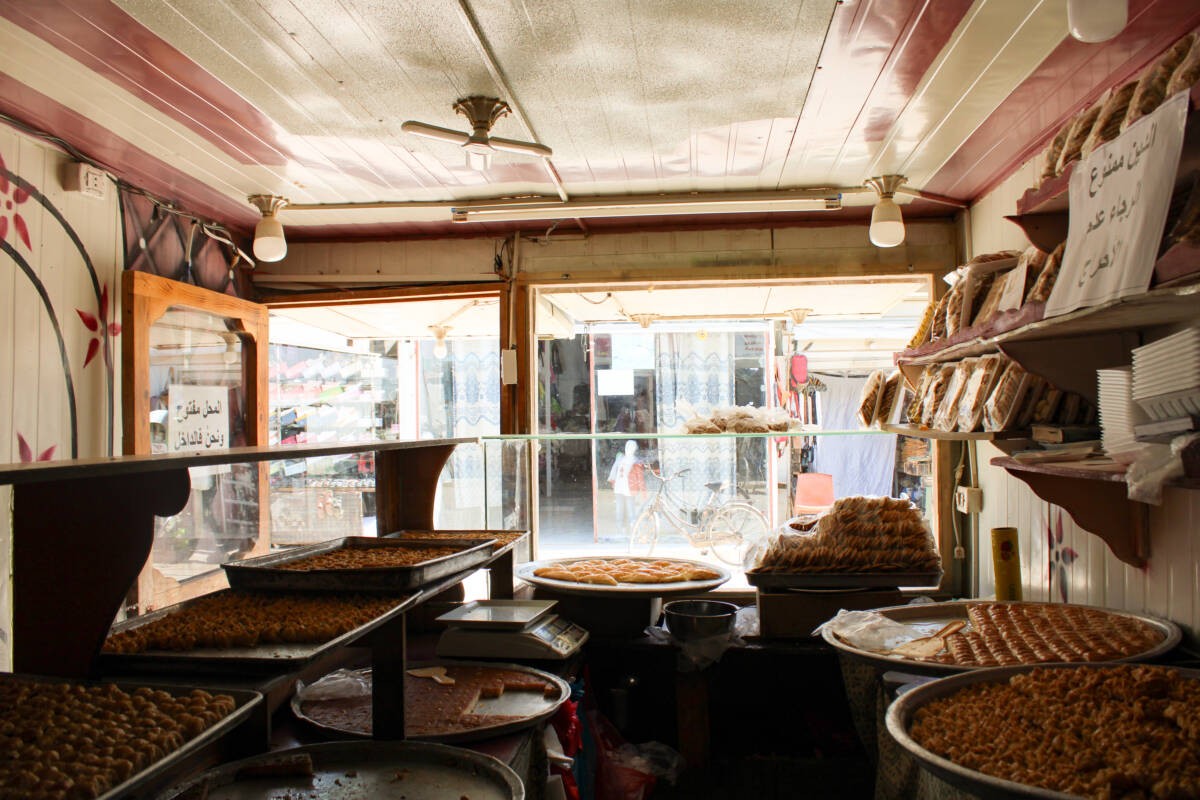
A sweets shop on Zaatari camp’s bustling Sham Elysées street, 3/4/2024 (Hanna Davis/ Syria Direct)
‘We don’t know what to eat’
The drop in assistance and subsequent economic downturn has hit the most vulnerable in Zaatari camp particularly hard.
Dalal Ismail Askar fled Daraa for Jordan in 2013 and has lived in Zaatari ever since. Five of the 70-year-old’s seven children—three disabled adults and two teenage girls—still live with her. Her husband returned to Syria with one of her sons in 2018, and does not support her financially. Another one of her sons, 24-year-old Ismail, lives next door with his family.
In one corner of their small caravan, Askar’s eldest daughter, 30-year-old Ola, banged her head repetitively against her knee, the steady thumping sound reverberating throughout the room. In the opposite corner, 20-year-old Raghad lay quietly in a fetal position. Ola and Raghad are both partially paralyzed, while Askar’s 26-year-old son Alaa has an intellectual disability.
“Everything is a disaster, especially now during Ramadan,” she told Syria Direct. “Sometimes we don’t know what to eat for iftar because we don’t have enough food. We go to the supermarket and the prices are so high. Sometimes we go and come back with nothing.”
The family’s portions usually get smaller towards the end of the month, in the days before the next assistance payment. At the end of March, their daily iftars consisted of simple foods like falafel and boiled potatoes, Askar said. Her family rarely eats more expensive foods like meat and fruit.
Askar used to receive 120 JOD ($169.28) per month in WFP food assistance for the six people in her home. Last July, her total food allowance amount dropped to 90 JOD ($126.96). She receives additional funds from UNHCR for adult diapers, sanitary materials and cooking gas, which amounts to around 28 JOD ($39.67) a month. WFP assistance makes up the majority of her income.
When Askar went to the supermarket this month, soon after the assistance was reloaded, she began to cry when she saw how little she bought, she recalled. “The food won’t be enough for the whole month.”
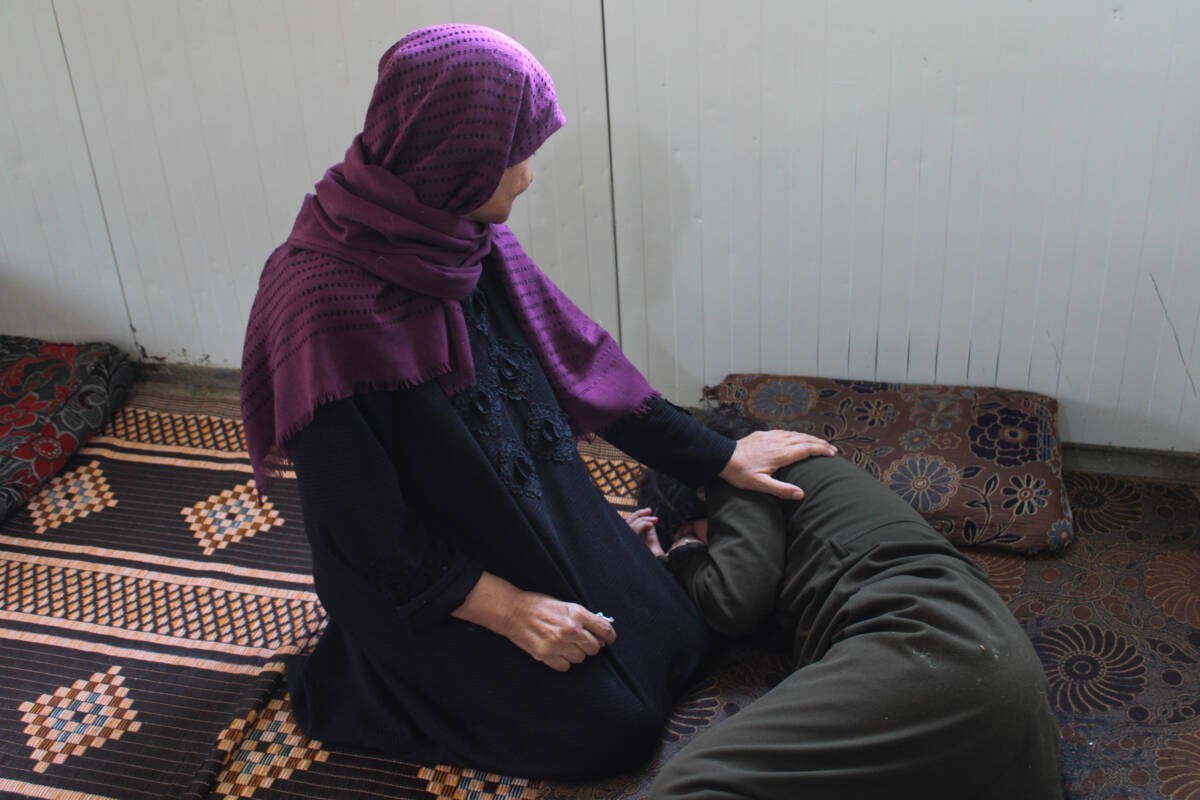
Dalal Ismail Askar, 70, sits beside her daughter Raghad, 20, who is partially paralyzed, inside their caravan in Jordan’s Zaatari refugee camp, 3/4/2024 (Hanna Davis/ Syria Direct)
Ismail, her son next door, occasionally works in farms outside the camp, but the work is seasonal and he only makes around 5 JOD ($7) a day. He does not have a work permit, so uses a camp “leave permit” to go out and work informally.
The number of work permits issued and renewed for Syrians has notably declined in recent years, following a November 2020 regulation requiring non-Jordanians to pay a 16 JOD ($23) monthly fee to maintain them, which is impossible for many Syrians to afford.
Only about 3,105 refugees in Zaatari, out of nearly 80,000 residents, currently hold work permits, according to UNHCR.
‘Negative coping strategies’ on the rise
Back outside Zaatari’s bustling Safeway supermarket, nine teenage boys stood in the crowds, waiting to help shoppers carry their groceries back to their homes. Each trip could earn them about 0.50 JOD ($0.71), one 18-year-old said.
Most in the group work about six hours a day, while still trying to go to school in between the grocery runs, he added.
Even before the WFP assistance cuts, increasing numbers of Syrian refugees in the camps were resorting to negative coping strategies to get by, including child labour, pulling children out of school and child marriage, according to WFP.
“Negative coping strategies are what we see rising, and what we are really concerned about,” Schoenbauer said. He worries about the sustainability of the camps, as Syria’s crisis enters a 14th year with no end in sight. “The durable solutions are not there,” he said. “There is no immediate chance for the safe and dignified return to Syria and there are limited possibilities in terms of resettlement.”
Although the resettlement of refugees from Jordan reached its highest rate since 2016 last year—with more than 10,700 women, men, and children finding a new home in a third country—it is only a “drop in the ocean compared to the resettlement needs,” which are roughly seven times higher than the departure numbers, he added.
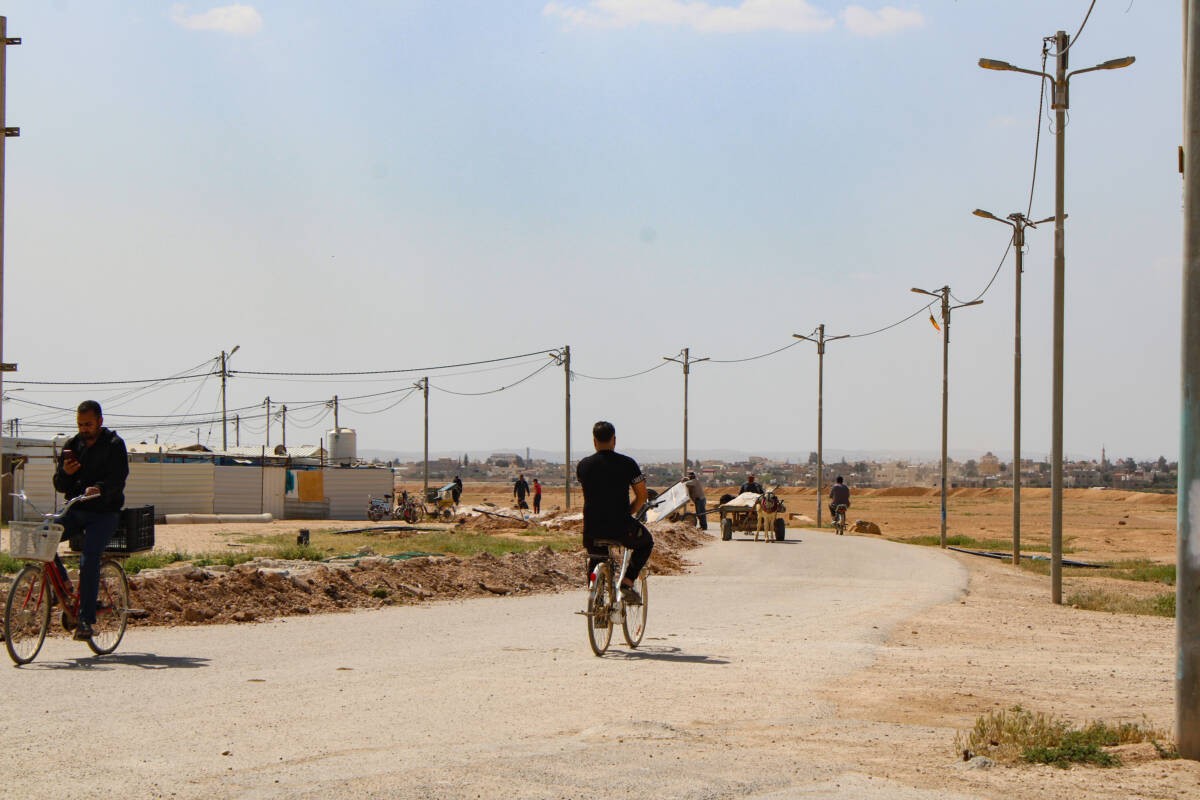
A street that wraps around the perimeter of Zaatari refugee camp in northern Jordan, 3/4/2024 (Hanna Davis/ Syria Direct)
As the group of boys stood waiting for clients at the supermarket, two crushed soda cans fell from the back pockets of one 13 year old. He quickly bent over to retrieve them, saying he planned to sell them for around 0.05 JOD ($0.07) per kilogram.
He said he is the oldest of five children, and no one else in his family was working. “There’s no money,” he said. “Anything can help.”
*Some sources asked not to be identified by name, and have been referred to using pseudonyms chosen by Syria Direct.

